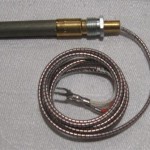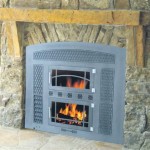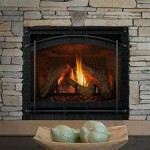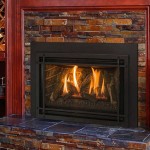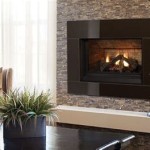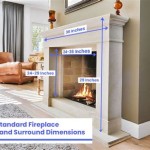Freestanding Wood Burning Fireplace: Modern Elegance and Efficient Heating
The freestanding wood burning fireplace has undergone a significant transformation in recent years, evolving from a rustic, utilitarian heating appliance to a statement piece that embodies modern design and efficiency. Contemporary models offer a blend of aesthetic appeal, technological advancements, and sustainable practices, making them a desirable option for homeowners seeking supplementary heat and a focal point for their living spaces.
Modern freestanding wood burning fireplaces prioritize clean lines, minimalist aesthetics, and a focus on maximizing the viewing area of the flames. Manufacturers utilize materials such as steel, cast iron, and even elements of glass to create visually striking designs that complement contemporary interior styles. These fireplaces are often elevated on pedestals or legs, further enhancing their visual presence and allowing for optimal heat distribution.
The appeal of a freestanding wood burning fireplace lies in its ability to provide both warmth and ambiance. The crackling fire and dancing flames create a relaxing and inviting atmosphere, while the radiant heat provides a comfortable and efficient alternative or supplement to central heating systems. Furthermore, modern models are designed with improved combustion technology, minimizing emissions and maximizing fuel efficiency.
Efficiency and Sustainability in Modern Designs
One of the most significant advancements in modern freestanding wood burning fireplaces is the emphasis on efficiency and sustainability. Older models often suffered from poor combustion, resulting in high emissions and inefficient fuel consumption. Contemporary designs incorporate features such as secondary combustion chambers, catalytic converters, and air wash systems to address these issues.
Secondary combustion chambers ensure that unburned gases are re-ignited, resulting in a more complete and efficient burn. This process significantly reduces emissions of harmful pollutants, such as particulate matter and carbon monoxide. Catalytic converters further reduce emissions by oxidizing remaining gases, converting them into less harmful compounds.
Air wash systems use a stream of air to keep the glass viewing area clean, allowing for an unobstructed view of the flames. This feature also contributes to improved combustion by supplying oxygen to the fire. Furthermore, many modern models are EPA-certified, meeting strict emission standards and ensuring that they are environmentally responsible choices.
The choice of wood also plays a crucial role in the efficiency and sustainability of a wood burning fireplace. Using seasoned, dry wood is essential for optimal combustion. Wet or green wood produces more smoke and creosote, reducing efficiency and increasing the risk of chimney fires. Sustainable forestry practices ensure that wood is harvested responsibly, minimizing the environmental impact of wood burning.
Design and Aesthetic Considerations
Modern freestanding wood burning fireplaces are available in a wide range of designs and styles, allowing homeowners to find a model that perfectly complements their interior décor. From sleek and minimalist designs to more traditional and ornate options, there is a fireplace to suit every taste.
Many manufacturers offer models with a focus on clean lines and geometric shapes. These fireplaces often feature a simple, uncluttered design that integrates seamlessly into modern living spaces. The use of materials such as steel and glass further enhances the contemporary aesthetic.
Other models may incorporate elements of traditional design, such as cast iron construction and decorative accents. These fireplaces offer a more classic and timeless appeal, while still incorporating modern features and technologies. The choice of finish, such as matte black, brushed nickel, or porcelain enamel, can further enhance the aesthetic of the fireplace.
The size and shape of the fireplace should also be considered, taking into account the size of the room and the desired focal point. A larger fireplace can make a bold statement in a spacious living room, while a smaller model may be more appropriate for a smaller space. The shape of the fireplace, such as rectangular, square, or round, can also influence its visual impact.
Beyond the fireplace itself, the surrounding area can be designed to enhance its aesthetic appeal. A decorative hearth, a mantel, and strategically placed lighting can all contribute to creating a warm and inviting atmosphere. The use of natural materials, such as stone or wood, can further complement the fireplace and create a cohesive design.
Installation and Safety
The installation of a freestanding wood burning fireplace requires careful planning and adherence to building codes and safety regulations. It is essential to consult with a qualified professional to ensure that the fireplace is installed correctly and safely.
The location of the fireplace should be carefully considered, taking into account factors such as proximity to combustible materials and the accessibility of the chimney. The fireplace should be placed on a non-combustible surface, such as concrete or tile, and should be at least a certain distance away from walls and furniture.
The chimney is a critical component of the fireplace system, and it must be properly installed and maintained. The chimney should be sized appropriately for the fireplace, and it should be inspected regularly for damage or blockages. Creosote buildup in the chimney can pose a fire hazard, so it is important to have the chimney cleaned regularly.
Carbon monoxide detectors should be installed in the home to alert occupants to the presence of this potentially deadly gas. Carbon monoxide is a colorless and odorless gas that can be produced by incomplete combustion. Regular inspection and maintenance of the fireplace and chimney can help to prevent carbon monoxide poisoning.
It is also important to follow safe operating practices when using a wood burning fireplace. Never leave a fire unattended, and always ensure that the damper is open when the fireplace is in use. Avoid burning trash or other materials that can produce harmful emissions. Store firewood safely away from the fireplace, and keep a fire extinguisher nearby in case of emergency.
Modern freestanding wood burning fireplaces offer a combination of aesthetic appeal, efficient heating, and sustainable practices. By carefully considering design, installation, and safety, homeowners can enjoy the warmth and ambiance of a wood burning fireplace while minimizing its environmental impact.
Dru Fire
Dru Fire
Dru Fire

Hail The Queen Of Hygge Midcentury Modern Freestanding Fireplace Ashley Claire Real Estate Benchmark Realty
Dru Fire

Freestanding Wood Stoves Friendly Fires

Contemporary Freestanding Fireplaces Modern Suspended Wood Heaters

Pin On Fireplace Fire Pit Design

Studio 2 Freestanding Wood Burning Stove Stovax Stoves

Studio Air 1 Freestanding Wood Burning Fires
Related Posts

